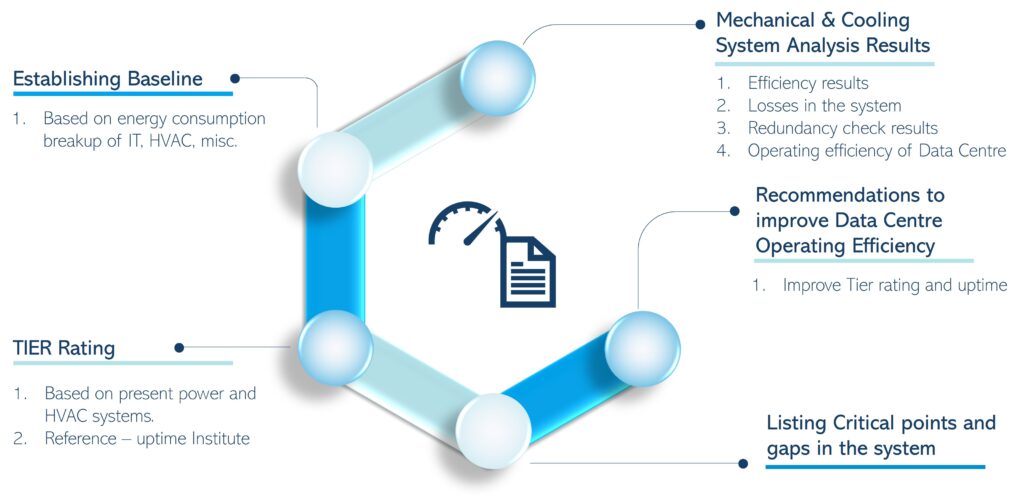
Overview on Data Center
Data Center heart of any Technology driven organization has many machines & servers congregated at a space to collect, store and transfer massive amounts of data. As technology advancements are multifold, more and more organizations are choosing cloud operations to transform from conventional tasks into digital tools and software to increase productivity and profitability and sustainability. Due to digital transformations and increased rate of newer IT companies getting established day by day, there is significant demand for expansion of Data Centers(DC) and setting up of new Data Centers.
Increasing dependency and expansion of Data Centers drives organizations to approach trends of Sustainability & Energy efficiency(EE), improved safety, reliability in DC operations. Two main aspects or segments which comes into consideration regarding the latter are 1)The Electrical system that powers entire DC. 2) HVAC or the Cooling system that supports the servers environment.
Need for Data Center Audit
- DC uptime and system conformity are very crucial for any organization functioning, as it can cost upto several million dollars.
- Ensuring redundant and reliable power source for DC is an essential necessity, as improperly designed electrical networks can lead to single point of failure or shutdown of partial or entire equipment affecting businesses.
- Cooling Loads consume close to 35-40%, inefficient systems (poor air conditioning and air flow management) could lead to undesired higher overall Power Usage Effectiveness (PUE).
- These inefficiencies in Power system and HVAC would often result in higher utility bills and without creating any significant value addition.
Our Approach and Scope;
We do comprehensive review of all critical areas like Computer room, UPS & Battery Room and HVAC to identify gaps and evaluate measures to improve/upgrade Data center performance and reliability.

Deliverables :
A detailed report consisting of,

- Measurement and Observation results of cooling and electrical systems.
- Baseline w.r.t present Energy consumption (segregated energy consumption data of IT, HVAC and Losses) and PUE of DC
- TEIR rating of existing system as per Uptime Institute.
- List of critical points and gaps in the system.
- Recommendations and Suggestions to improve the operating efficiency-PUE.
- Recommendations to improve the system to continue competitive with industry benchmarks.
Standards and References :
- Uptime institute Tier Standard -2014.
- Ashrae TC 9.9
- IEEE 519-2014 and IEEE 3006.7-2013.
- Green grid matrices and
- Industry Best Practices.
